Amish people live very simple lives of piety, separate from the influences and distractions of modern living. With their modest, traditional attire, they resemble 17th-century Puritans, but the Amish are often confused with other cultural and religious groups.
Usually, it’s because of a shared heritage and a belief system rooted in a similar origin. Sometimes, it’s the traditional clothes that they wear. So how do we distinguish between the Puritans vs Amish? Do they have a similar heritage or faith?
Join us as we take a closer look at the people known as the Puritans. We’ll examine their origins and beliefs, and compare them to those of the Amish community. And we’ll discover once and for all just how much they have in common.
What this article covers:
- What are Puritans?
- Similarities Between the Amish and Puritans
- Differences Between the Amish and Puritans
What are Puritans?
Until 1517, the Roman Catholic Church was the dominant form of Christianity in Europe, but that was the year everything changed. The Protestant Reformation had begun, with its proponents seeking to reform the Church’s ways and to get out from under Papal authority.
The Puritans were a group of Protestant Christians in the 16th and 17th centuries. Their mission was to further distinguish the Church of England, from the Roman Catholic Church.
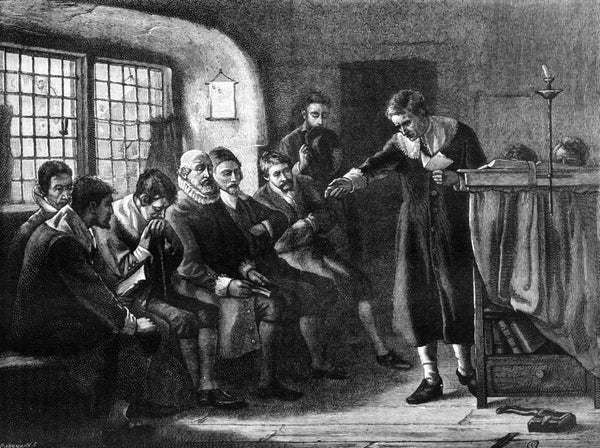
While it was technically a Protestant denomination, they felt that this church was still too similar to the Roman Catholic faith; they sought to reform it. They put their faith above all else and wished to simplify their worship in the face of Catholic pomp and ceremony.
While the Puritans no longer exist as a distinct group, many religious orders are puritanical. This may be because they splintered off from the original Puritan movement or their beliefs aligned with the Puritan system. But where exactly did the Puritans come from, and what did they truly believe?
Puritan Origins
The Puritans originated in England. This is where they first became active, admonishing the Church of England for not being ‘fully reformed’.
They wanted to ‘purify’ the Anglican Church (as it later became known) of its Roman Catholic practices. Thus an early 16th-century group of English folk became known as the Puritans.
Puritan Beliefs
Puritans believed in simplicity and modesty, including in their worship spaces. The Ten Commandments were held in high regard, and they wished to encourage strict adherence to these laws.
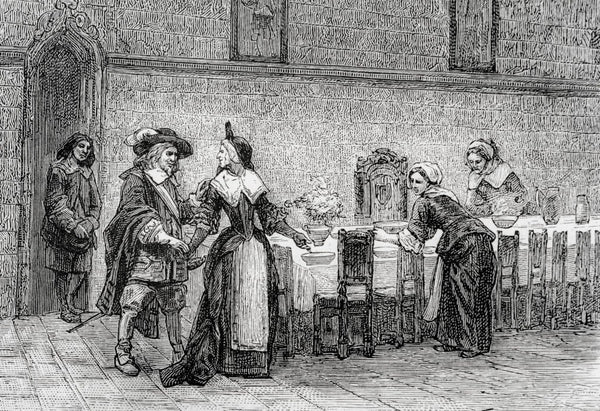
Puritans also believed in the concept of predestination. This is the doctrine that God has ordained all that will ever happen. This doctrine was also by the religious reformer Clavin, and St. Augustine of Hippo.
Unlike Seventh-Day Adventists, they attended church services on Sundays, as the Amish do. Interestingly, some people claim to be Amish Seventh-Day Adventists. These are people who have Amish beliefs but differ on the point of the day of rest and religious worship.
Similarities Between the Amish and Puritans
Having made it this far, you’ve probably already seen some similarities between the Puritans and the Amish. Both Amish and Puritans are protestant Christians. However, unlike other groups often confused with the Amish, as in the Mormons vs Amish debate, they looked to the Bible (as the Amish do) only for their inspiration.
And what’s more, both the Puritans and the early Amish were Christian reformers in their own right. Let’s look at the most obvious similarities between them.
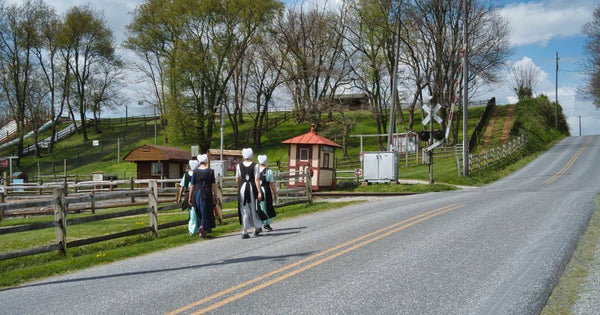
The Desire For Simpler Christian Practices
The Puritans wished to further reform the Church of England. They felt that the Church of England had not distanced itself enough from the largely pagan practices of the Roman Catholic Church. Puritans fought for a truly reformed Christian movement, based more on the Bible than on rituals.
The Amish wished to reform the Swiss Anabaptist movement. Jakob Amman, the leader of the people we now know as the Amish and who carry his name, was an Anabaptist. Therefore, he was a protestant Christian. He, too, felt that his faith group was not following the teachings in the Bible closely enough.
Their grievances with their respective churches were not the same. But the desire to reform and turn back to a simpler form of Christianity can be found in both the Amish and the Puritans.
The Puritans rejected the idea of a private baptism but accepted it in a public worship service. Unlike the difference between Quakers and Amish. Quakers don’t practice it at all, while the Amish do. It’s a prerequisite for an Amish adult to be accepted into the community and be allowed to marry.
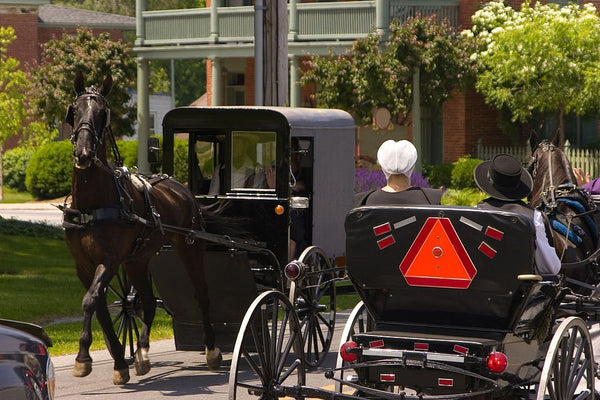
God’s Will
Both the Puritans and the Amish realized early on that the Ten Commandments are to be respected and devoutly followed. The Amish believe, as the Puritans did, in following the scriptures more closely as a guideline for daily life.
Like the Puritans, the Amish believe in the infallible and eternal nature of God. They believe that He has ordained all things.
Therefore, the strict belief in the Will of God and His predestination is present in both their doctrines, although perhaps to differing degrees.
Escape From Persecution Brought Them to the New World
Thousands of English Puritans made their way to North America in the 17th century. They did so to escape persecution in their English homeland. Most of them settled in what became known as New England.
The leader of the Amish, Jakob Amman, came from Switzerland. Once his followers had become a distinct group, they were facing the threat of persecution from their church. Desperate to be able to practice their faith freely, without persecution or interference, they made their way to the New World.
Modesty and Plain Living
The Amish also believe in keeping their church gathering spaces simple and modest, just like the Puritans. Amish worship together, but in simple barns that they have built themselves. There is no ornamentation, and the emphasis is placed on the scripture readings and sermons.

Although they didn’t have a set dress code, the Puritan’s attire closely resembled what the Amish still wear to this day. Puritans dressed simply and modestly. The men usually wore dark colors, and bright clothing or ornate accessorizing was avoided. This is echoed in Amish clothing rules to this day.
Modesty and virtuous living were important to both the Puritans and the Amish, much like the Hutterites. But the Hutterites differ from the Amish in that they don’t allow private ownership of property.
Self-Sufficiency
The Puritans believed in self-sufficiency, as the Amish do. They also engaged mostly in farming and manual labor, like the Amish still do today. Walk into any Amish community and you’ll see rows of fresh produce springing from the earth, ready to be gathered and carried in a handmade harvest basket.
The Amish have become renowned for their talents in woodwork, quilt making, and basket weaving. They use these skills, handed down through the generations, to furnish their own homes. And they also sell their crafted products to earn an income stream for the community,
One of their most popular endeavors is the range of handwoven wicker baskets for sale here at Amish Baskets. We’ve got everything from rattan storage baskets for shelves in the pantry to a tall wicker laundry basket for the bathroom.
You’ll find only the best quality, handmade items that are 100% authentically Amish. And nothing beats these vintage Easter baskets, perfect for putting smiles so the faces of your children and grandchildren.
Differences Between the Amish and Puritans
Despite their obvious similarities, the Amish and Puritans have some glaring differences too. Let’s take a closer look at these differences now.
Origins
The first and biggest difference is in their origins, just as with the Amish vs Shaker story. The Shakers were an 18th-century Christian restorationist sect that originated in England. And the Puritans, too, originated in England.
The Amish originated in continental Europe, mostly in Switzerland, the surrounding Germanic regions, and the Netherlands. It’s why the Amish still speak an old form of High German, known to outsiders as Pennsylvania Dutch. It’s a misnomer though, as it’s not Dutch at all.
The Amish and Puritans also weren’t active during the same period. The first Puritan settlers came to the US in the 1600s. The first Amish settlers arrived on these shores a century later, at the time that the Shakers were starting in England.
Cause
The next big difference is in what drove them to start their movements. In other words, what was the cause they so deeply believed in?
The Puritans wanted to eradicate all traces of Catholicism and Papal influence from the Protestant movement, particularly the Church of England. There were therefore no Puritan Catholics, just as there are no Amish Catholics.

But the early Amish were not fighting against relics of Catholicism but against Anabaptist leaders who didn’t share their reverence for certain biblical teachings like adult baptism. So, are the Amish Anabaptists?
They have the same cultural heritage, but the Amish no longer consider themselves Anabaptists. They are now a distinct cultural group and faith movement, with some shared Anabaptist beliefs and some different ones.
You may have heard that the Dunkards also descended from the Anabaptists. But are Dunkards Amish? No, they’re a distinct group that shares certain beliefs.
Living Conditions
Frontier life was hard in the early days of America. As immigrants in a foreign land, both the Puritans and the Amish would’ve faced similar hardships. But their living conditions were not the same.
The Amish chose, and still choose, to live separately from the rest of society. They were determined to be self-reliant, making all that they needed, themselves.
The Puritans also formed their own colonies. But they weren’t quite as determined to live outside of the general populace, without modern conveniences, like the Amish.
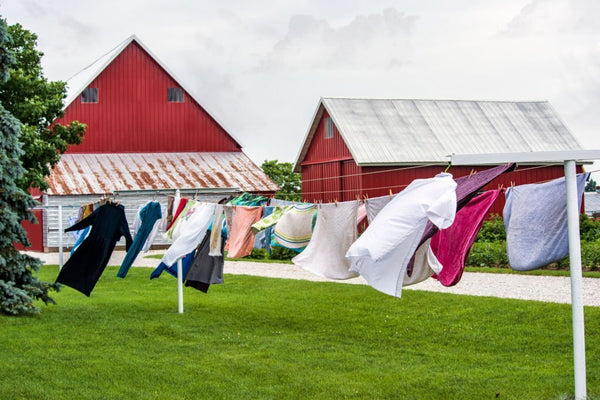
Religious Separatism
The Puritans didn’t consider themselves ‘separatists’. Despite their grievances with the Church of England, they hadn’t denounced the Church of England.
The Amish, on the other hand, made a clean break from the Anabaptists. Theirs was a new faith movement, and in time it became a distinct cultural identity. A book of laws, known as the Ordning, came into being to regulate Amush community life. It is still their moral compass to this day.
Many groups branched off from the Anabaptists, and many of them came to make a new life in America. Besides the Amish, the Mennonites and Brethren were among these offshoots. So although some people refer to Amish Brethren, the Brethren are a separate group with a shared origin.
Social Behaviors
The Puritans were not in favor of most forms of music and dance, although they liked to read and write poetry. The Amish, especially the ultra-orthodox Old Order Amish, share similar views.
This is not because either group saw dancing to music as inherently evil, but rather as immodest. Even musical instruments are largely avoided by the Old Order Amish as they could lead to boastfulness and pride in one’s musical talents.

The Puritans are no longer around, so it’s hard to say how they would behave today. But the Amish have changed very little since making a new life for themselves in America. Their clothing still resembles an 18th-century dress. And they still ride in horse-drawn buggies.
The Mennonites also cling to their traditional clothes and social behaviors. The really conservative ones also use a horse and buggy. But the Amish vs Mennonite buggy story is a bit more complex. Some Mennonites will drive cars, albeit very plain ones. The Amish don’t drive cars.
Conclusion
Are the Amish Puritans, or descended from them? No. while many people living in America today are the descendants of those Puritan immigrants, the Amish have a different heritage. Amish people came to America from Europe.
Due to their tradition of only marrying within the community, and the low conversion rates of outsiders, Amish genetic heritage has remained virtually unchanged. Therefore, they don’t share the same origins. But the Puritans and Amish share a common purpose – a simpler and more scripturally-based life.
Did You Find Our Blog Helpful? Then Consider Checking:


